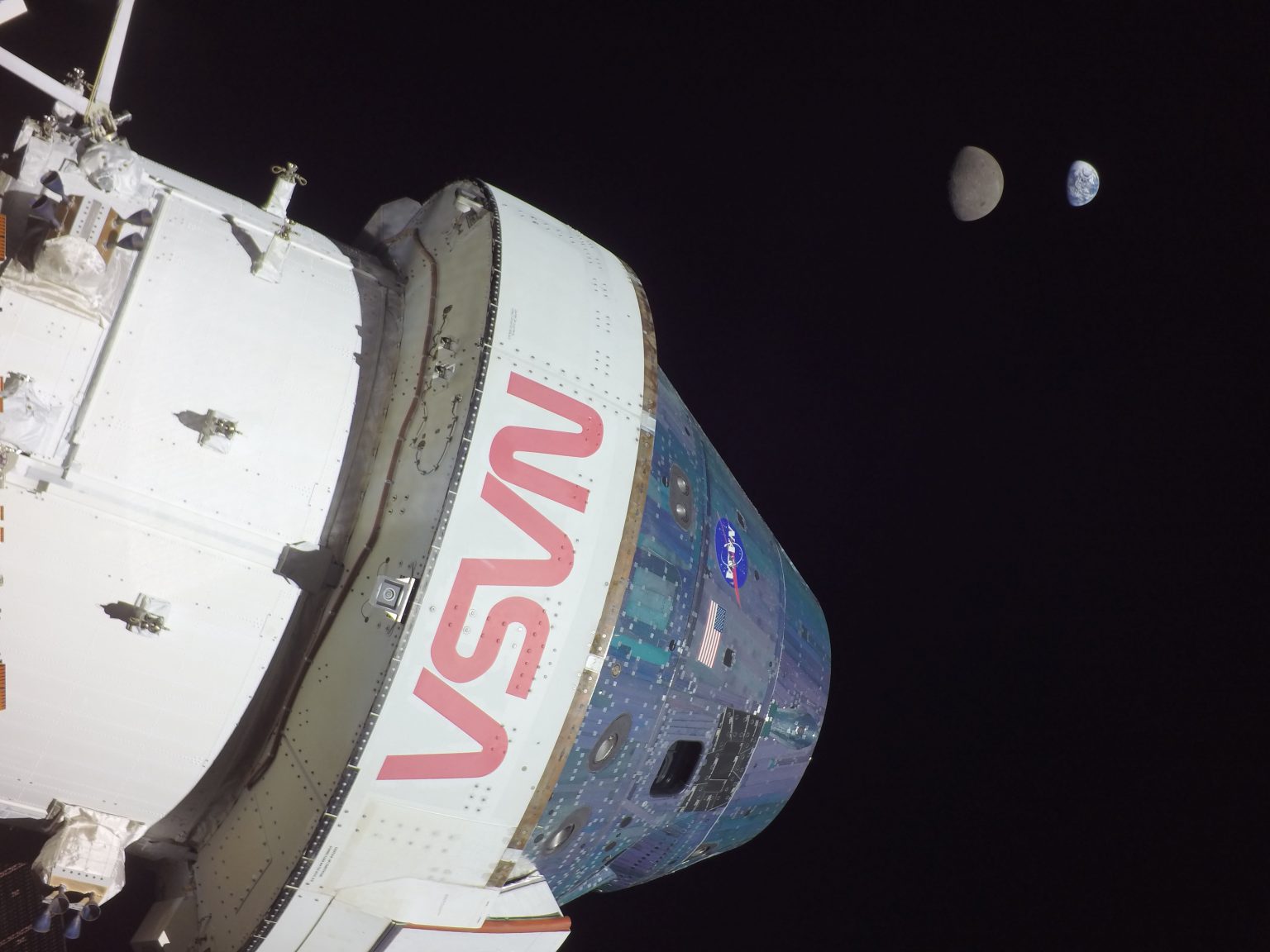NASA’s Orion spacecraft reached half of its historic mission to the Moon. This happened on Monday, November 28, on the 13th day of the flight of the almost 26-day Artemis I mission, which sent the Orion spacecraft without a crew to the Moon, launched into space by the Space Launch System (SLS) mega rocket. It was on this day that Orion reached the apogee of the retrograde orbit of the Moon, which set a record for the most distant journey from Earth that a space transport designed for astronauts has ever overcome. This is an incredible distance of 435 thousand km.

At this distance, an incredible view of the Earth and the Moon at the same time opens up. This historic event was captured by one of Orion’s onboard cameras, which sent breathtaking photos and live video to Earth. The new frames have the highest resolution that has been photographed from the distance of the Moon to date.
Previously, such incredible footage was shown by the missions of the Apollo program in the 1960s and 1970s. Perhaps the most famous example was the broadcast of Christmas Eve from Apollo 8, which took place on December 24, 1968, showing black-and-white shots of the Moon. Then NASA astronauts Frank Borman, Jim Lovell and Bill Anders became the first people to fly around the Moon.
Epic views are not only creative inspiration from the space. Videos and photos created during the Artemis I mission are aimed at informing about upcoming missions to the Moon. NASA wants to make sure that the spacecraft is ready to safely deliver people to such far distances from Earth. If Artemis I is successful, the following two will take place: Artemis II with a crew will fly around the Moon in about 2024, and Artemis III will land people on the surface of the Moon in 2025 or 2026.
Orion will remain in the retrograde orbit of the Moon until December 5, when the spacecraft will set a course to return to Earth, which it will reach on December 11 with a landing off the coast of California in the Pacific Ocean.
Earlier we reported about how Orion cosplayed the famous “Earthrise” photo.
According to NASA
Follow us on Twitter to get the most interesting space news in time
https://twitter.com/ust_magazine

